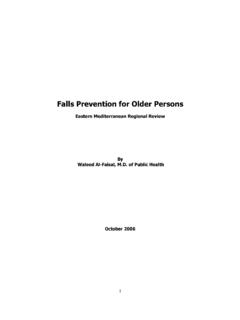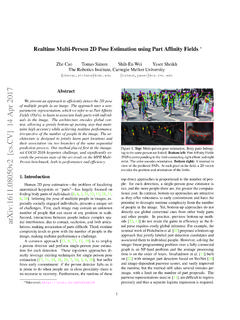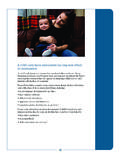Transcription of Developmental Trauma Disorder - Traumatic Stress Institute
1 CM E. Developmental Trauma Disorder A new, rational diagnosis for children with complex Trauma histories. Bessel A. van der Kolk, MD. C. hildhood Trauma , including obtaining information about childhood EDUCATIONAL OBJECTIVES. abuse and neglect, is probably Trauma , abuse, neglect, and other expo- 1. Identify emotional triggers the single most important pub- sures to violence. Research has shown and patterns of re-enactment lic health challenge in the United States, that Traumatic childhood experiences in traumatized children.
2 A challenge that has the potential to be not only are extremely common but also largely resolved by appropriate preven- have a profound impact on many differ- 2. Discuss the spectrum of de- tion and intervention. Each year, more ent areas of functioning. For example, velopmental derailments sec- than 3 million children are reported to children exposed to alcoholic parents ondary to complex Trauma authorities for abuse or neglect in the or domestic violence rarely have secure exposure. US; about 1 million of those cases are childhoods; their symptomatology tends 3.
3 Describe patterns of accom- Many thousands more to be pervasive and multifaceted and modation in traumatized undergo Traumatic medical and surgical is likely to include depression, various children. procedures and are victims of accidents medical illnesses, and a variety of im- and of community violence (see Spin- pulsive and self-destructive behaviors. maintenance organization (HMO) mem- azzola et al., page xxx). However, most Approaching each of these problems bers responded to a questionnaire about Trauma begins at home; the vast majority piecemeal, rather than as expressions of adverse childhood experiences, includ- of people (about 80%) responsible for a vast system of internal disorganization, ing childhood abuse, neglect, and fam- child maltreatment are children's own runs the risk of losing sight of the forest ily dysfunction.
4 Eleven percent reported parents. in favor of one tree. having been emotionally abused as a Inquiry into Developmental mile- child, reported physical abuse, stones and family medical history is rou- COMPLEX Trauma and sexual abuse. In addition, tine in medical and psychiatric examina- The Traumatic Stress field has adopted reported being exposed to fam- tions. In contrast, social taboos prevent the term complex Trauma to describe ily alcohol abuse, were exposed the experience of multiple, chronic and to mental illness, witnessed their Dr.
5 Van der Kolk is professor of psychiatry, prolonged, developmentally adverse mothers being battered, and re- Boston University Medical School, Boston, MA; Traumatic events, most often of an inter- ported family drug abuse. clinical director, The Trauma Center at Justice personal nature (eg, sexual or physical The ACE study showed that adverse Resource Institute , Brookline, MA; and co-di- abuse, war, community violence) and childhood experiences are vastly more rector, the National Child Traumatic Stress early-life onset.
6 These exposures often common than recognized or acknowl- Network Community Program, Boston. occur within the child's caregiving sys- edged and that they have a powerful re- Address reprint requests to: Bessel A. van tem and include physical, emotional, lationship to adult health a half-century der Kolk, MD, [ADDRESS]. and educational neglect and child mal- later. The study confirmed earlier inves- Dr. van der Kolk has no industry relation- treatment beginning in early childhood tigations that found a highly significant ships to disclose.
7 (Cook et al., page xxx, and Spinazzola relationship between adverse childhood et al., page xxx). experiences and depression, suicide at- In the Adverse Childhood Experi- tempts, alcoholism, drug abuse, sexual ences (ACE) study by Kaiser Perman- promiscuity, domestic violence, ciga- ente and the Centers for Disease Control rette smoking, obesity, physical inactiv- and Prevention,2 17,337 adult health ity, and sexually transmitted diseases. 2 PSYCHIATRIC ANNALS 00:0 | MONTH 200X. In addition, the more adverse childhood ior by anticipating their caregivers' re- child's response is likely to mimic that experiences reported, the more likely sponses to This interaction allows of the parent the more disorganized a person was to develop heart disease, them to construct what Bowlby called the parent, the more disorganized the cancer, stroke, diabetes, skeletal frac- internal working models.
8 9 A child's tures, and liver disease. internal working models are defined by However, if the distress is over- Isolated Traumatic incidents tend to the internalization of the affective and whelming, or when the caregivers them- produce discrete conditioned behavioral cognitive characteristics of their primary selves are the source of the distress, and biological responses to reminders relationships. Because early experiences children are unable to modulate their of the Trauma , such as those captured in occur in the context of a developing arousal.
9 This causes a breakdown in the posttraumatic Stress Disorder (PTSD) brain, neural development and social their capacity to process, integrate, and diagnosis. In contrast, chronic maltreat- interaction are inextricably intertwined. categorize what is happening. At the ment or inevitable repeated traumatiza- As Don Tucker has said: For the human core of Traumatic Stress is a breakdown tion, such as occurs in children who are brain, the most important information in the capacity to regulate internal states. exposed to repeated medical or surgical for successful development is conveyed If the distress does not ease, the relevant procedures, have a pervasive effects on by the social rather than the physical en- sensations, affects, and cognitions can- the development of mind and brain.
10 Vironment. The baby brain must begin not be associated they are dissociated Chronic Trauma interferes with neuro- participating effectively in the process into sensory fragments14 and, as a re- biological development (Ford, see page of social information transmission that sult, these children cannot comprehend xxx) and the capacity to integrate senso- offers entry into the culture. 10 what is happening or devise and execute ry, emotional and cognitive information Early patterns of attachment affect appropriate plans of action.








